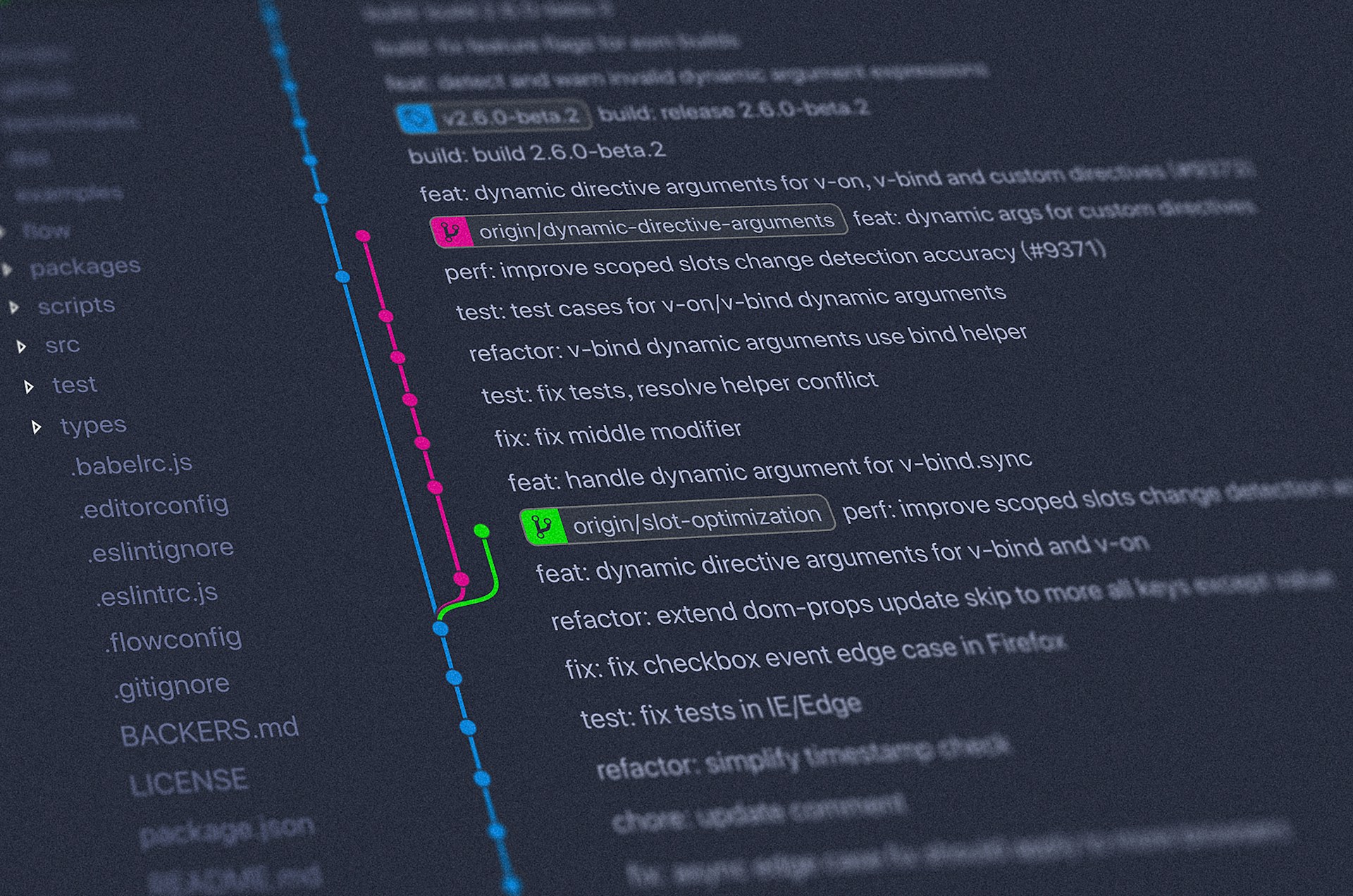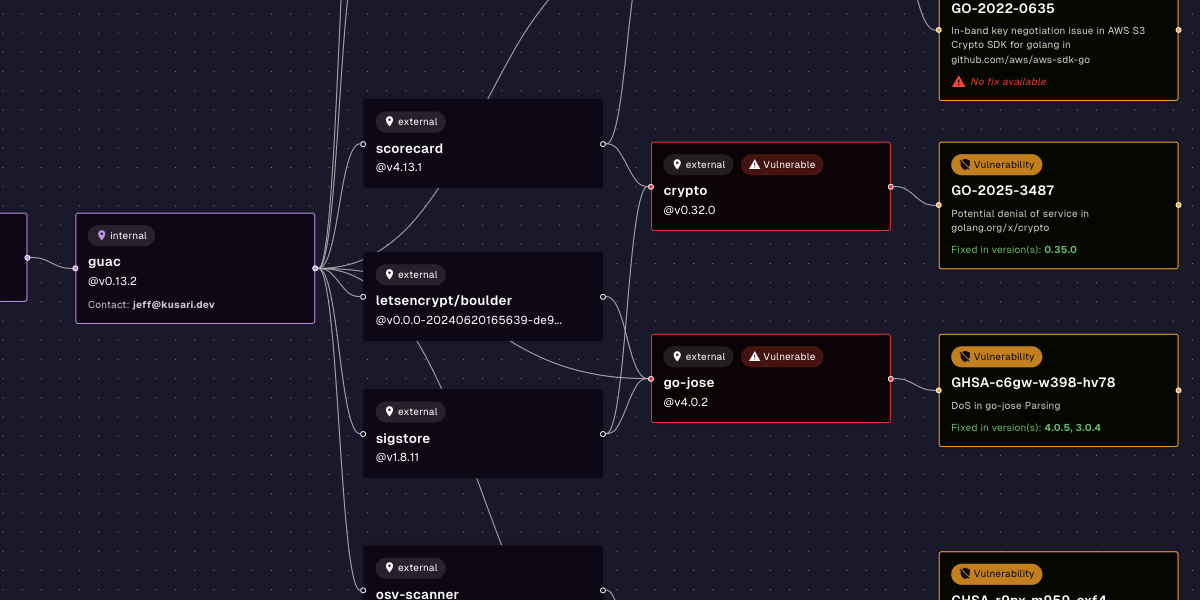Best SBOM Tools 2025: How to Choose the Right SBOM Generation Tool
Compare the best SBOM tools for 2025. Expert analysis of cdxgen, Syft, npm-sbom & more. Choose the right SBOM generator for your needs.
October 1, 2025

There are so many tools to build SBOMs for your application. How do you know which one to pick? This comprehensive SBOM tool comparison will help you select the right solution for your software supply chain security needs.
What Are SBOM Generation Tools?
Software Bills of Materials (SBOMs) are the foundational piece of understanding your software supply chain. By listing the components that go into your application, SBOMs give you a starting point for understanding risks — including vulnerabilities, license issues, and other supply chain risks. But how do you create those SBOMs?
The best way to generate SBOMs for your software is to create them during the build process. Many tools exist to generate SBOMs, and we've spent some time with the different options to help you decide.
Single-Language SBOM Tools
When your application and its dependencies are all written in the same programming language, SBOM generation gets much easier. Single-language SBOM generation tools are typically able to produce more reliable SBOMs, including transitive dependencies.
npm-sbom: Best Choice for Node.js
Some ecosystems, like Node.js have first-party SBOM generators. For Node applications, the npm-sbom command is a great choice. npm-sbom easily integrates into existing Node workflows and can produce SBOMs in either of the two most popular specifications: CycloneDX and SPDX.
Key Features:
- Native Node.js integration
- Supports both CycloneDX and SPDX formats
- Comprehensive transitive dependency analysis
- Zero configuration required
Best for: Pure Node.js applications where accuracy is critical
CycloneDX Language-Specific Tools
CycloneDX produces language-specific tools for a variety of ecosystems, including Java (including both the maven and gradle build systems), Node.js, Python, and Golang.
These tools analyze both direct and transitive dependencies, providing a thorough inventory of all components within a project. This depth of analysis enhances supply chain transparency and security. These tools are well-maintained, in contrast to some other language-specific tools we examined.
Supported Languages:
- cyclonedx-maven-plugin: Java Maven projects
- cyclonedx-gradle-plugin: Java Gradle projects
- cyclonedx-python: Python projects
- cyclonedx-go: Go modules
Best for: Single-language projects requiring maximum accuracy
Multi-Language SBOM Tools
While single-language tools often have the best accuracy and depth, not all software projects are single-language efforts. An application might have a front end written in Node, a backend written in Rust, and a command line client written in Go. You need a tool with multi-language support in order to handle those applications.
cdxgen: Top Multi-Language Option
cdxgen from CycloneDX is the official SBOM generation tool of the Open Worldwide Application Security Project (OWASP). It supports a wide array of programming languages, including transitive dependencies for certain ecosystems, and can generate SBOMs in the CycloneDX format. It also offers an API for SBOM generation, so it could be easier to integrate into various workflows.
Key Features:
- 20+ support programming language
- OWASP official endorsement
- API-first architecture
- Comprehensive transitive dependency resolution
- Excellent CI/CD integration
Pros:
- Most comprehensive language support available
- Active development and community support
- Strong enterprise adoption
- Handles complex dependency scenarios
Cons:
- Can be resource-intensive for very large projects
- Occasional false positives in complex scenarios
Best for: Multi-language enterprise applications
Syft: Container-Focused Alternative
syft from Anchore is another popular multi-language SBOM generator. Syft can analyze multiple ecosystems, including Python, Go, Java, JavaScript, PHP, and Rust, making it versatile for diverse projects. The tool is pretty user-friendly, with straightforward commands and clear documentation. Syft integrates well into CI/CD pipelines, facilitating automated SBOM generation during the build process. However, it does seem to sometimes miss dependencies found by other tools.
Key Features:
- Fast scanning performance
- Strong container image analysis
- Clean, intuitive CLI
- Multiple output formats supported
Pros:
- Excellent performance and speed
- Strong container ecosystem integration
- User-friendly interface
- Good Kubernetes support
Cons:
- Sometimes misses dependencies found by other tools
- Less comprehensive than cdxgen for complex scenarios
Best for: Container-heavy environments with Kubernetes
Tern: Container Layer Analysis
Tern is another SBOM generation tool focused specifically on container use cases. It generates SBOMs in the SPDX format for container images and Dockerfiles, providing a layer-by-layer view of the contents. These granular insights are valuable for understanding how components are introduced into the image. However, in our experience the analysis can be time-consuming. This lengthens build times. Also, it was primarily designed for containerized applications, making it of limited use for non-containerized projects.
Key Features:
- Layer-by-layer container analysis
- SPDX format specialization
- Dockerfile analysis capabilities
- Unique container composition insights
Pros:
- Unique container layer visibility
- Strong compliance reporting features
- Good for understanding image composition
Cons:
- Slow performance impacts build times
- Limited to container environments only
- Less active development than alternatives
Best for: Compliance-focused container analysis
SBOM Tool Comparison Table
How to Choose Your SBOM Tool
Step 1: Assess Your Technology Stack
- Single language? → Choose language-specific tools (npm-sbom, CycloneDX language tools)
- Multi-language? → Consider cdxgen or Syft
- Container-heavy? → Evaluate Syft or Tern
Step 2: Define Your Requirements
- Accuracy priority? → Language-specific tools or cdxgen
- Speed priority? → Syft or npm-sbom
- Compliance focus? → Tern or cdxgen with SPDX output
- Enterprise features? → cdxgen or Anchore ecosystem
Step 3: Test Multiple Tools
In general, it's best to pick a language-specific tool if you have a single-language application. These tend to produce the highest-quality SBOMs, especially if it's an official ecosystem tool. For multi-language applications, we've found cdxgen to be the most reliable. However, you should try several tools to see which integrate best into your workflows and give the best results for your portfolio.
Testing Checklist:
- ✅ Generate test SBOMs with 2-3 different tools
- ✅ Compare dependency detection accuracy
- ✅ Test CI/CD pipeline integration
- ✅ Measure build performance impact
- ✅ Validate output format compatibility
SBOM Implementation Best Practices
1. Automate SBOM Generation
Integrate SBOM generation directly into your CI/CD process to ensure every release includes current dependency information.
# Example GitHub Actions integration
- name: Generate SBOM with cdxgen
run: cdxgen -t javascript -o sbom.json .
- name: Upload SBOM artifact
uses: actions/upload-artifact@v3
with:
name: software-bill-of-materials
path: sbom.json2. Validate SBOM Quality
- Verify transitive dependencies are captured
- Check for complete license information
- Validate against known dependency inventories
- Ensure consistent output formats
3. Store and Version SBOMs
- Version control SBOM files alongside source code
- Store SBOMs in artifact repositories
- Implement retention policies for historical analysis
- Enable SBOM diff analysis between releases
Common Selection Mistakes to Avoid
Mistake 1: Choosing Based on Popularity Alone
Better approach: Test tools against your specific codebase and requirements
Mistake 2: Ignoring Integration Requirements
Better approach: Evaluate how tools fit into your existing development workflow
Mistake 3: Focusing Only on Initial Generation
Better approach: Consider ongoing maintenance, updates, and analysis needs
Mistake 4: Not Validating Accuracy
Better approach: Cross-validate results and implement quality checks
Getting More Value from Your SBOMs
While choosing the right SBOM generation tool is crucial, maximizing SBOM value requires additional capabilities beyond basic generation.
The Kusari Platform will take your SBOM and enrich it with additional information on dependencies, vulnerabilities, licenses, and more. This gives you a more complete view of your software supply chain with:
- Real-time vulnerability correlation across your entire software portfolio
- Advanced risk prioritization based on business context and exploitability
- Automated compliance reporting for regulatory requirements
- Comprehensive dependency relationship mapping beyond individual SBOMs
- Continuous monitoring for new supply chain threats
Ready to transform your SBOM data into actionable security intelligence? Sign up for a demo to see how Kusari can help you get actionable insights from your software supply chain data.
Time to select the right tool
Selecting the right SBOM generation tool is a critical first step in securing your software supply chain. Whether you choose a specialized single-language tool like npm-sbom for accuracy, or a comprehensive multi-language solution like cdxgen for versatility, the most important decision is to start generating SBOMs consistently.
Key takeaways:
- Single-language projects: Use ecosystem-specific tools for maximum accuracy
- Multi-language environments: cdxgen offers the best overall capabilities
- Container-focused teams: Consider Syft for performance and Kubernetes integration
- Compliance requirements: Tern provides detailed container layer analysis
Remember: imperfect SBOMs provide significantly more value than no SBOMs. Start with any tool that fits your workflow, then optimize and enhance your approach over time.
Looking for more software supply chain security insights? Explore our guides on understanding transitive dependencies, SBOM management strategies, and building a complete supply chain security program.
Frequently Asked Questions
Should I use multiple SBOM generation tools?
For critical applications, using multiple SBOM generation tools and cross-validating results can significantly improve accuracy. Different tools may detect dependencies that others miss, giving you a more complete picture of your software composition. However, when implementing multiple tools, ensure consistent output formats for downstream processing and consider the additional maintenance overhead.
How often should I generate new SBOMs?
You should generate new SBOMs with every build to maintain currency and accuracy. This ensures your SBOM reflects the latest dependency changes and security updates. For stable production systems where dependencies rarely change, weekly SBOM generation may suffice, but daily generation is recommended for active development environments where dependencies change frequently.
What's the difference between SPDX and CycloneDX formats?
The difference between SPDX and CycloneDX formats lies in their primary focus and use cases. SPDX (Software Package Data Exchange) emphasizes licensing and compliance information, making it ideal for legal and procurement teams. CycloneDX focuses on security applications, providing richer vulnerability and dependency relationship data that security teams prefer. Many organizations choose based on their primary requirements, though some tools support both formats.
Can imperfect SBOMs still provide value?
Absolutely. Imperfect SBOMs still provide value because having some visibility into your software composition is infinitely better than having none. Even if your SBOM misses some dependencies or lacks complete metadata, it still gives you a foundation for vulnerability management, license compliance, and supply chain risk assessment. You can improve SBOM quality over time while gaining immediate benefits from what you have.
How do SBOM tools integrate with vulnerability scanners?
SBOM tools integrate with vulnerability scanners by providing standardized data formats that vulnerability management platforms can consume. Most modern SBOM generators export in SPDX or CycloneDX formats, which vulnerability scanners can directly import to correlate your dependencies with known CVEs. This integration enables automated vulnerability assessment workflows and continuous monitoring of your software supply chain risks.
What's the relationship between SBOM generation and DevSecOps?
The relationship between SBOM generation and DevSecOps is foundational to modern secure development practices. SBOM generation enables shift-left security by providing early visibility into dependencies during development, allowing teams to identify and address risks before they reach production. This supports DevSecOps principles of continuous security monitoring, automated compliance checking, and integrating security seamlessly into CI/CD pipelines.
Previous
No older posts
Next
No newer posts


















.webp)









.webp)























.png)
.png)




.png)
.png)
.png)
.png)
.png)
.png)
.png)



.png)









.jpg)





































